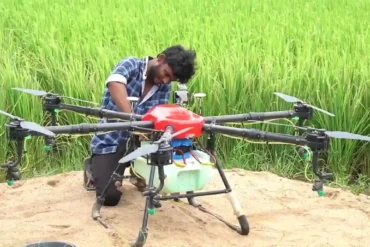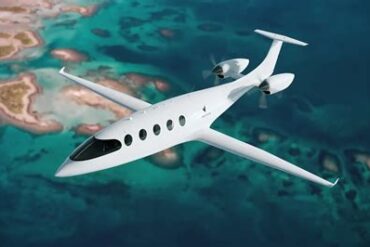In today’s fast-paced world of agriculture, farmers are always on the lookout for new and exciting ways to boost their crop yields while being gentle on the environment. One of the latest trends that’s really taking off is the use of agricultural drones to keep an eye on and nurture those crops.
Drones are the epitome of precision agriculture and smart farming, using cutting-edge technology to collect and analyze tons of data. This information helps farmers get more out of their land with fewer resources.
How Drones Are Lending a Hand on the Farm
Just like how GPS, GIS, and specialized software work together with tractors and combines, there are tailored programs that guide drones on their aerial reconnaissance missions over the fields.
Different Types of Drones
There are all sorts of drones out there on the market. The ones commonly used in agriculture usually have rotors – some have a single rotor like a helicopter, while others have multiple rotors, sometimes called quadcopters or quadrotors.
Drones come in various sizes too. The smaller ones are great for taking photos or personal use, but the bigger models can span several feet wide and even carry liquid payloads for spraying crops.
Getting Ready for Takeoff
Before you can fly a drone, you’ll need to get certified by the Federal Aviation Administration (FAA). The certification you need depends on how you’ll be using the drone, where you’ll be flying it, and whether you’ll be spraying pesticides or herbicides on your crops.
No matter what, it’s super important to follow all the rules and regulations. You’ll need to fly at safe altitudes, steer clear of obstacles, and be extra careful throughout each flight.
Spraying Crops from Above
Agricultural drone spraying is when you use a drone to spread fertilizer to nourish your crops, or to apply herbicides for controlling weeds and pesticides for dealing with pesky insects.
Mapping Out Your Fields
One of the main ways drones are used in agriculture is to create detailed maps of fields. These maps give farmers a 3D view of their land, showing changes in elevation and field boundaries.
When used with other programs, these maps allow farmers to closely inspect and assess the condition of their crops, so they can take targeted action if needed.
Why Drones Are a Farmer’s Best Friend
The best part about using drones for data collection is how fast, user-friendly, and cost-effective they are. Farmers can quickly spot smaller problem areas, fix them, and then move on to the next field without having to lug around heavy machinery like tractors or sprayers.
Drones are also incredibly precise, and since they fly above the crops, they don’t damage plants or disturb the soil.
4 Awesome Ways Drones Are Helping Farmers
There are all sorts of ways drones are making agriculture easier and more efficient, even in places like Nebraska. They’re being used for mapping fields, checking on plant health, and precisely spraying chemicals.
1. Keeping an Eye on Crop Performance
Today’s precision agriculture drones have advanced software that can detect and record changes in things like the number of plants, their health, and height. This gives farmers valuable insights into areas with poor drainage or soil issues. With this information, they can quickly identify problem spots and focus their efforts where they’re needed most.
While farmers can manually pilot the drones, there’s also specialized software that allows for pre-programmed flights over the fields. The drones maintain a consistent altitude above the plants, adjusting for changes in terrain while scanning everything thoroughly.
2. Putting a Stop to Pests
Precision agriculture drones offer a solution for spraying herbicides or pesticides. Traditionally, farmers would either use sprayers or hire crop duster airplanes to spread chemicals, depending on factors like the conditions and the height of the plants.
By using analytical tools to identify areas of crop infestation or disease, farmers with drones can target their chemical applications precisely where they’re needed. This targeted approach minimizes the amount of chemicals used, which is better for the environment and the farmer’s wallet.
3. Giving Crops a Nutritious Boost
Another great use for agricultural drones is applying fertilizer in a precise and sparing way. Using similar analytical techniques, farmers can efficiently distribute fertilizer so that the nutrients reach the crops that need them most, without any waste.
This precise fertilizer application strategy allows farmers to optimize their input costs while keeping their crops healthy and protecting the land.
4. An Aerial Sidekick
Even basic drones with standard cameras can be an invaluable tool for farmers. They allow for quick damage assessments after storms, and make it easy to keep an eye on livestock or inspect fences.
Drones save a ton of time by covering vast distances that would take forever on foot or in a vehicle. The versatility of drone technology means farmers can use them for so much more than just crops – they’re helpful for livestock management and maintaining farm infrastructure too.









